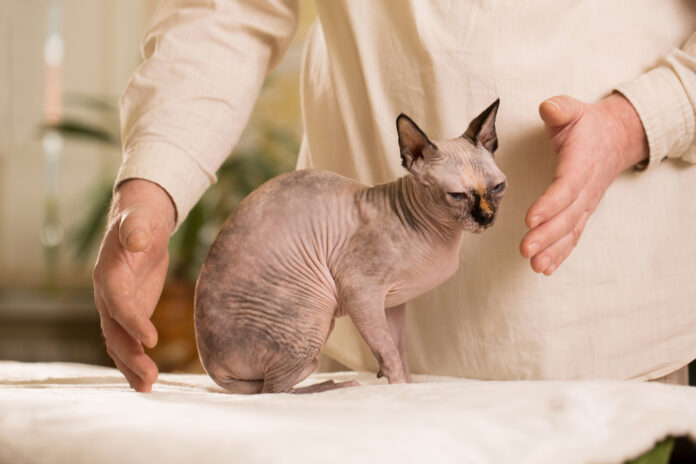Is Dental Health Really About Plaque and Tartar?

Dental health has little to do with white teeth free of plaque and tartar. In fact, a dog or cat can have beautiful teeth — and still have dental disease. For over a century, however, veterinary dental education has taught that removing plaque and tartar from tooth surfaces, through regular cleaning and brushing, along with feeding dry kibble/dental chews and providing chew toys, are sufficient for dental health. Although these things are important, they’re not addressing the root cause of dental disease, which is microbial.
Animal parents can be very diligent about dental maintenance, yet still end up paying for tooth extractions. Extractions correlate with shortened lifespans, and any event that causes a wound or breach in the gum tissue can cause transient bacteremia — aka, blood poisoning.1-4
So what do we really need to know when it comes to our animals’ dental hygiene?
FACT #1: Dental disease is caused by oral microbes that inhabit every millimeter of soft tissue (tongue, cheeks, gums); the immune system then begins to attack that soft tissue.
FACT #2: Dental cleanings and brushing temporarily dislodge microbes on the surfaces of teeth and gums, but the microbes re-attach to those surfaces within minutes after physical detachment, and continue with the same destructive behaviors as before.
FACT #3: Teeth need to be extracted because the soft tissue holding them in place degrades through the actions of certain microbes and your animals’ uncontrolled immune response.
FACT #4: Dogs and cats without any plaque or tartar can develop dental disease. (Plaque and tartar buildup does not cause dental disease; it does correlate with dental disease in dogs and cats that harbor certain problematic oral microbes.)
FACT #5: Dental disease is actually a soft tissue disease, and indicators of gum health (healthy pink coloring) should be monitored to keep your animal’s mouth healthy.
Here are some things you can do to help your dog or cat with dental hygiene:
- Learn about the signs of gum inflammation (discoloration/ redness, swelling, bleeding, erosion) and do frequent visual exams of your animal’s gum tissue.
- Limit treats, dental chews and kibble, which tend to be chock-full of carbohydrates; many dental disease-associated microbes depend on carbs.
- Keep your dog or cat well-hydrated. Drinking fresh water periodically throughout the day washes away the microbial toxins in the mouth.
- Keep your animals’ immune system and oral microbiome healthy with a diverse diet, plenty of exercise, and stress/anxiety reduction.
- Learn about non-chew/non-treat dental products that focus on oral microbes or mucosal immune cells.
For example, TEEF’s Protektin™ prebiotic formulations focus on improving the oral microbiome. It leverages plant-derived ingredients to stop microbes from creating by-products that cause dental disease and bad breath.

AUTHOR PROFILE

Emily Stein, PhD
Emily Stein, Ph.D. founded Primal Health (TEEF for Life) to focus on improving the dental health of both humans and animals by producing oral microbiome modulation products. She has spent 13 years developing Selective Microbial Metabolism Regulation Technology (SMMRT®) at Primal Therapies, Inc., which is focused on using metabolic influencers to re-engineer disease-causing bacterial biofilms into those that are health-promoting. Her expertise combines microbiology (UC Berkeley) and immunology (Stanford) – she is a presenting subject matter expert at numerous microbiome-focused conferences and summits all over the world.




